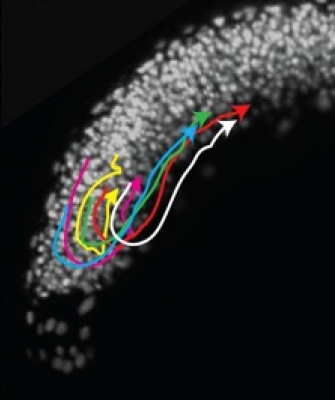 Harvard stem cell scientists have discovered a new signaling protein critical for embryonic development—the first such finding in more than a decade —by investigating RNAs that biologists hadn’t previously considered as generating proteins.
Harvard stem cell scientists have discovered a new signaling protein critical for embryonic development—the first such finding in more than a decade —by investigating RNAs that biologists hadn’t previously considered as generating proteins.
The protein, named Toddler by Harvard Stem Cell Institute Principal Faculty member Alexander Schier, PhD, and postdoctoral fellow Andrea Pauli, PhD, is thought to be a signal that promotes cell movement during embryogenesis. In the journal Science, they show that zebrafish embryos without Toddler contain cells that move sluggishly, and eventually develop no or small hearts.
“Without Toddler, the cells are much slower, too slow to reach their final destination,” said Schier, a professor of molecular and cellular biology at Harvard University. “Toddler allows cells to put their feet on the gas pedal, so they can move faster and spread in the embryo.”
His team identified Toddler by studying RNAs that are typically considered “non-coding.” Coding RNA is transcribed from a cell’s DNA and goes on to be translated into protein, whereas non-coding RNA is not translated into a functional protein. When the Schier lab searched for RNAs that might be non-coding, they discovered Toddler, as well as more than 300 other potential new zebrafish proteins, including more than 20 signaling proteins that may also be involved in embryonic development.
“There has been a lot of controversy over what’s coding and what’s non-coding,” Schier said. “Protein sequence conservation and mapping translated regions in RNAs have helped us feel confident which is which.”
Using Toddler as a proof of principle for the possibility that other signaling proteins may also be hidden in putative non-coding RNAs, the scientists hope to find more proteins that explain how embryos develop.
The work was supported by the National Institutes of Health, the Human Frontiers Science Program, the American Cancer Society, and the Howard Hughes Medical Institute.
Cited: Toddler: an embryonic signal that promotes cell movement via Apelin receptors. Science. January 9, 2014 [Epub ahead of print]
Photo: Toddler-facilited cell movement in a zebrafish embryo. (Credit: Alexander Schier)
